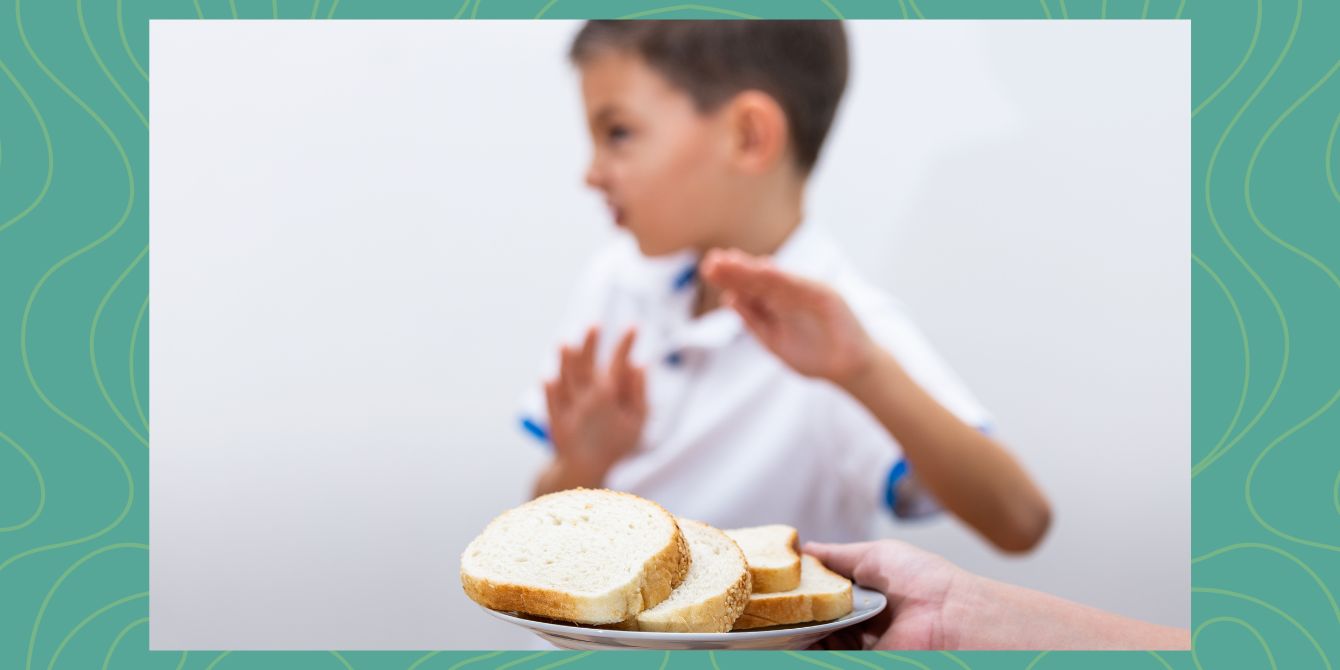Even though there’s a lot more awareness around celiac disease these days (and a wider variety of tasty gluten-free foods available), the chronic autoimmune disorder is still not fully understood by many. According to a new poll, the vast majority of parents believe that stomach issues are the telltale sign of celiac disease in children, but it turns out that only 20-30% of kids present with tummy troubles.
Back in January, researchers at The Harris Poll teamed up with Beyond Celiac, conducting an online survey of 2,074 U.S. adults as part of the 2024 Beyond Celiac Harris Poll Report. Per the results of the nationwide survey, only 14% of American parents with a child under 18 are aware that many kids with celiac disease do not have stomach issues, while nearly one-third (32%) mistakenly believe that consuming “a little bit” of gluten won’t hurt a child with the condition.
“Celiac disease is a very mysterious disease,” Alice Bast, founder and CEO of Beyond Celiac, said in a statement. “Studies show that up to 83% of people with celiac disease are either undiagnosed or misdiagnosed with other conditions. Additionally, one in 133 Americans has celiac disease, according to the landmark prevalence study on the disease, which also determined that 60% of children and 41% of adults diagnosed during the study were asymptomatic.”
What is celiac disease?
The organization notes that celiac disease is a “serious genetic autoimmune condition,” and it’s triggered by consuming gluten (wheat, barley and rye). “For someone with celiac disease, eating gluten damages the villi of the small intestine and interferes with the absorption of nutrients from food. Left untreated, celiac disease can lead to serious, long-term health problems including infertility, lymphoma, and other types of cancer, additional autoimmune problems and/or a range of life-threatening medical conditions.”
There are no medications to treat celiac disease and there’s no cure. The only way to manage the disease is to follow a 100% gluten-free diet, though there is no guaranteed way to offset the potential health issues someone could face long-term. According to the poll results, 38% of respondents are aware of this.
Symptoms of celiac disease in children
If digestive issues aren’t the default, what can parents look out for? “Irritability is one of the most common symptoms for kids,” the organization tells Motherly. “Others include failure to thrive, decreased appetite, delayed growth or puberty, discolored teeth, and anemia. By the time symptoms appear, some reversible damage to a child’s small intestine has already occurred.”
Parents will want to keep an eye out early on. “Symptoms can appear at any age, and in children as early as six months old,” they share.
According to Boston Children’s Hospital, these are the common symptoms of celiac disease in kids.
- Abdominal pain
- Bloating
- Diarrhea
- Constipation
- Fatigue
- Irritability
- Nausea or vomiting
- Failure to thrive
- Delayed puberty
- Short stature
- Anemia (iron deficiency)
- Frequent mouth sores
- Skin rashes (dermatitis herpetiformis)
- Dental enamel defects
- Headaches or migraines
How can you help manage your child’s celiac disease?
“It is hard enough being an adult with celiac disease, living in a world where the only option for avoiding sickness is following a strict gluten-free diet and having to consistently be on guard to make sure you don’t accidentally ‘get glutened’,” Bast explains. “So, it has to be even more challenging for children, especially those who are younger and do not understand why they cannot have the cake at their friend’s birthday party,” she added.
Given that the average time for accurate diagnosis is six to 10 years, there’s a lot of vigilance required by parents, especially when your little one is too young to tell you how they’re feeling.
Any concerning symptoms can be brought to your child’s pediatrician, and you might be referred to a pediatric gastroenterologist. Testing typically involves a blood test and an intestinal biopsy, which will confirm if there’s damage to the intestinal walls, indicating that nutrients are not being adequately absorbed when your child eats.
Managing symptoms will require eliminating all sources of gluten, and experts suggest checking your child’s bath and skin products to ensure they’re also gluten-free, especially if your child is young and might accidentally suck on their hands or feet.
Worried about your child’s diet and health? Your next best step is to reach out to their pediatrician for advice and, hopefully, answers.

